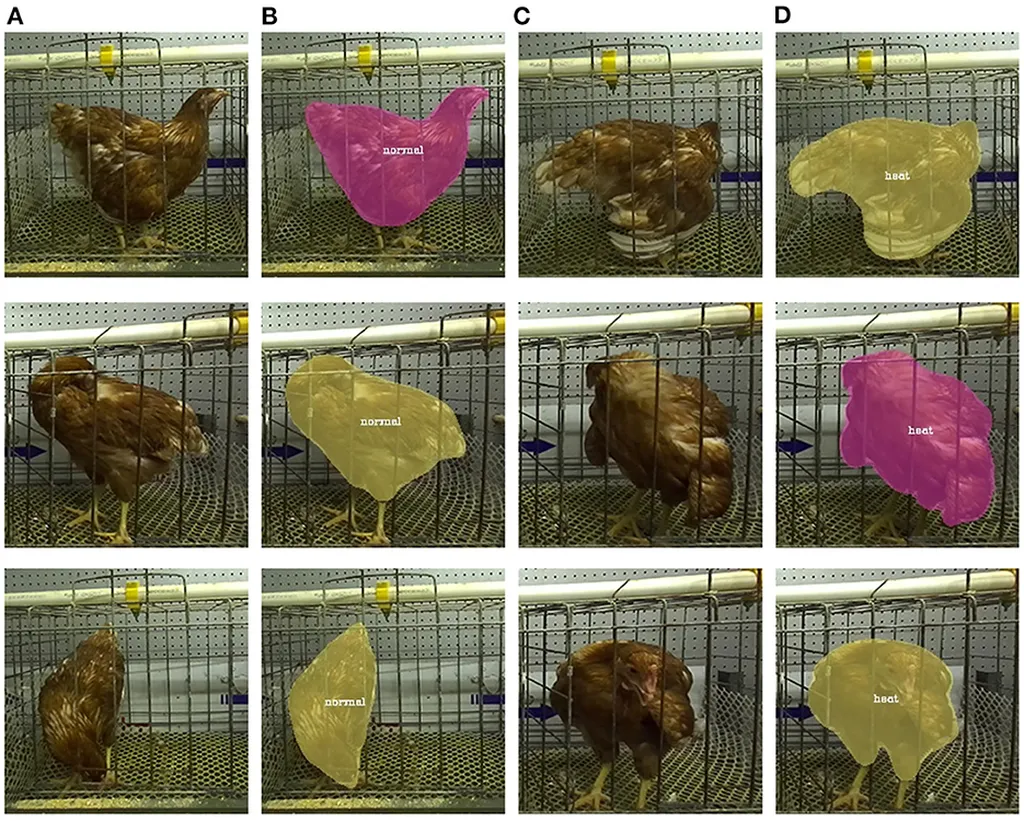In the heart of Tianjin, China, a team of researchers led by Yali Ma from the Key Laboratory of Smart Breeding has developed a groundbreaking tool to detect open-mouthed respiration in caged broilers, a critical indicator of heat stress and compromised welfare. This innovation, published in the journal ‘Animals’ (translated as ‘动物’ in English), promises to revolutionize precision livestock farming and has significant implications for the energy sector.
The challenge of detecting open-mouth panting in densely populated cages has long been a hurdle for farmers and technologists alike. “The small size of the target and frequent occlusions make it incredibly difficult to monitor this behavior accurately,” explains Ma. To overcome these issues, Ma and his team proposed an enhanced object detection method based on the lightweight YOLOv8n framework, incorporating four key improvements.
First, they added a dedicated P2 detection head to improve the recognition of small targets. Second, they introduced a space-to-depth grouped convolution module (SGConv) to capture fine-grained texture and edge features crucial for panting identification. Third, a bidirectional feature pyramid network (BIFPN) was employed to merge multi-scale feature maps for richer representations. Finally, a squeeze-and-excitation (SE) channel attention mechanism was used to emphasize mouth-related cues while suppressing irrelevant background noise.
The results are impressive. The method achieved a mean average precision (mAP) of 0.92 at a 50% intersection over union (IoU) threshold, demonstrating strong generalizability and real-time performance. “This approach provides a practical tool for intelligent broiler welfare monitoring and heat stress management,” says Ma. “It contributes to improved environmental control and animal well-being, which can have significant commercial impacts.”
The implications for the energy sector are substantial. By accurately detecting heat stress in broilers, farmers can optimize ventilation and cooling systems, leading to energy savings and reduced operational costs. Moreover, improved animal welfare can enhance productivity and profitability, creating a win-win situation for both farmers and the environment.
This research is a significant step forward in the field of precision livestock farming. As Ma notes, “The initial evaluation had data partitioning limitations, but our method’s generalizability is now dually validated through both independent testing and rigorous split-then-augment retraining.” This validation underscores the robustness of the tool and its potential for widespread adoption.
The development of this tool is not just a technological achievement but also a testament to the power of interdisciplinary collaboration. By combining expertise in computer vision, animal science, and agricultural engineering, Ma and his team have created a solution that addresses a critical need in the industry.
As the world grapples with the challenges of climate change and the need for sustainable agriculture, innovations like this are more important than ever. They offer a glimpse into a future where technology and agriculture converge to create more efficient, humane, and sustainable farming practices.
In the words of Ma, “This is just the beginning. We are excited about the potential of this tool and the positive impact it can have on the industry.” As the research continues to evolve, it is clear that the future of precision livestock farming is bright, and the possibilities are endless.

